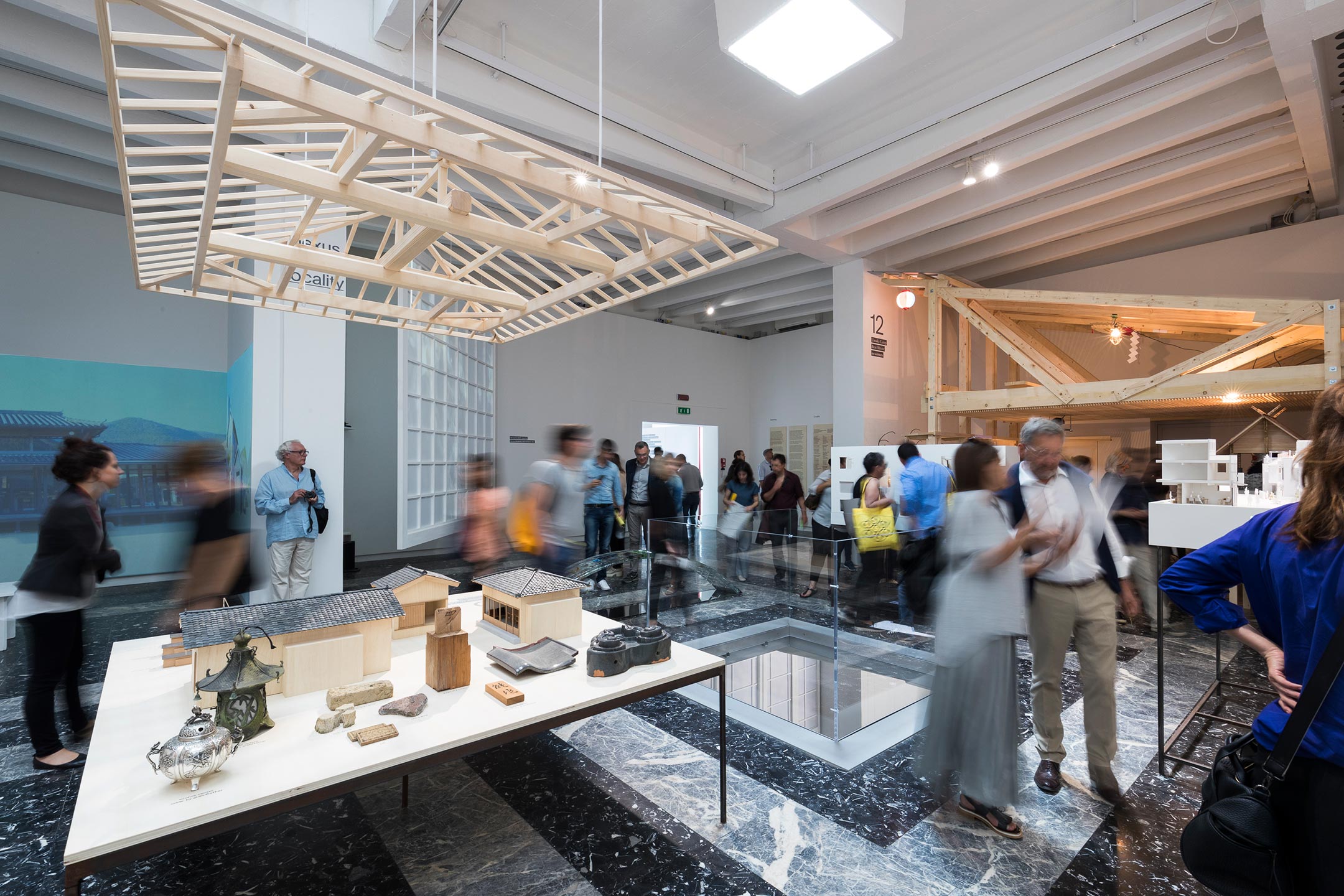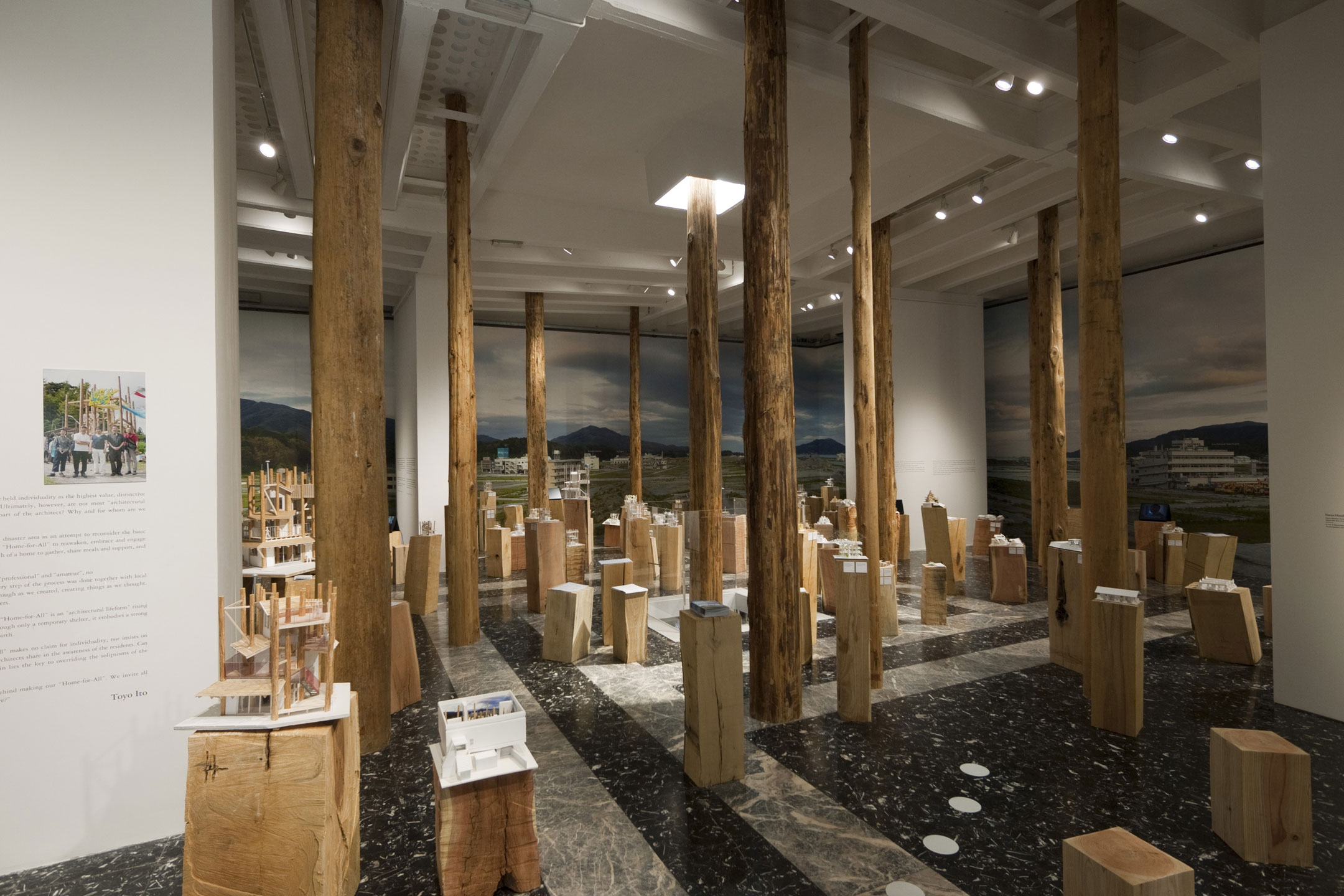Rem Koolhaas, who served as Director of the 14th International Architectural Exhibition, requested the National Pavilions to each research and raise issues on the theme of "Absorbing Modernity" in the context of the past 100 years. The Japan Pavilion team envisioned the pavilion as “A Storehouse of Contemporary Architecture,” likening the building’s architectural structure with its elevated exhibition space equipped with pilotis beneath to a traditional takayuka-style (raised floor) building, and within it presented a wide variety of materials that illustrated the relationship between modernization and architecture. Discussions and film screenings were held in the piloti space, thereby creating a visual connection between past and present through the opening in the center of the exhibition room.
The team regarded the 100-year history of Japanese architecture as “a process of permeation and conflict with modernizing society”, and organized the exhibition centering on the decade of the 1970s, when society as a whole was forced to change direction due to the oil crisis and environmental issues.
Particularly focusing on projects such as Osamu Ishiyama’s "Kaitakusha-no-ie" (The Farmer’s House), Toyo Ito’s "Domino House", Teruobu Fujimori’s "Architectural Detective Agency", Atelier Zo’s community center "Shinshukan", Tadao Ando’s "Row House in Sumiyoshi", Kazunari Sakamoto’s "Common House in Sanda", architectural fragments from the collection of Tsutomu Ichiki, and Hiroshi Hara’s "Umeda Sky Building", the exhibition presented the traces of conflict, contemplation, and creativity at the turning point of modernization through simultaneously introducing the independent research and experimental practices of these architects.
In addition to plans and models, a diverse array of documents and materials conveying the state of architecture and society were presented in the exhibition room, from notebooks, letters, furniture, pieces of demolished buildings, photographs and paintings, to magazines that supported the architectural world. The distribution of blueprint drawings of buildings carefully selected from the past 100 years was also a popular feature of the exhibition. In this way, the Japan Pavilion succeeded in presenting a large-scale critical overview of modern and contemporary Japanese architectural history at the Biennale, which indeed could not have been realized in Japan.
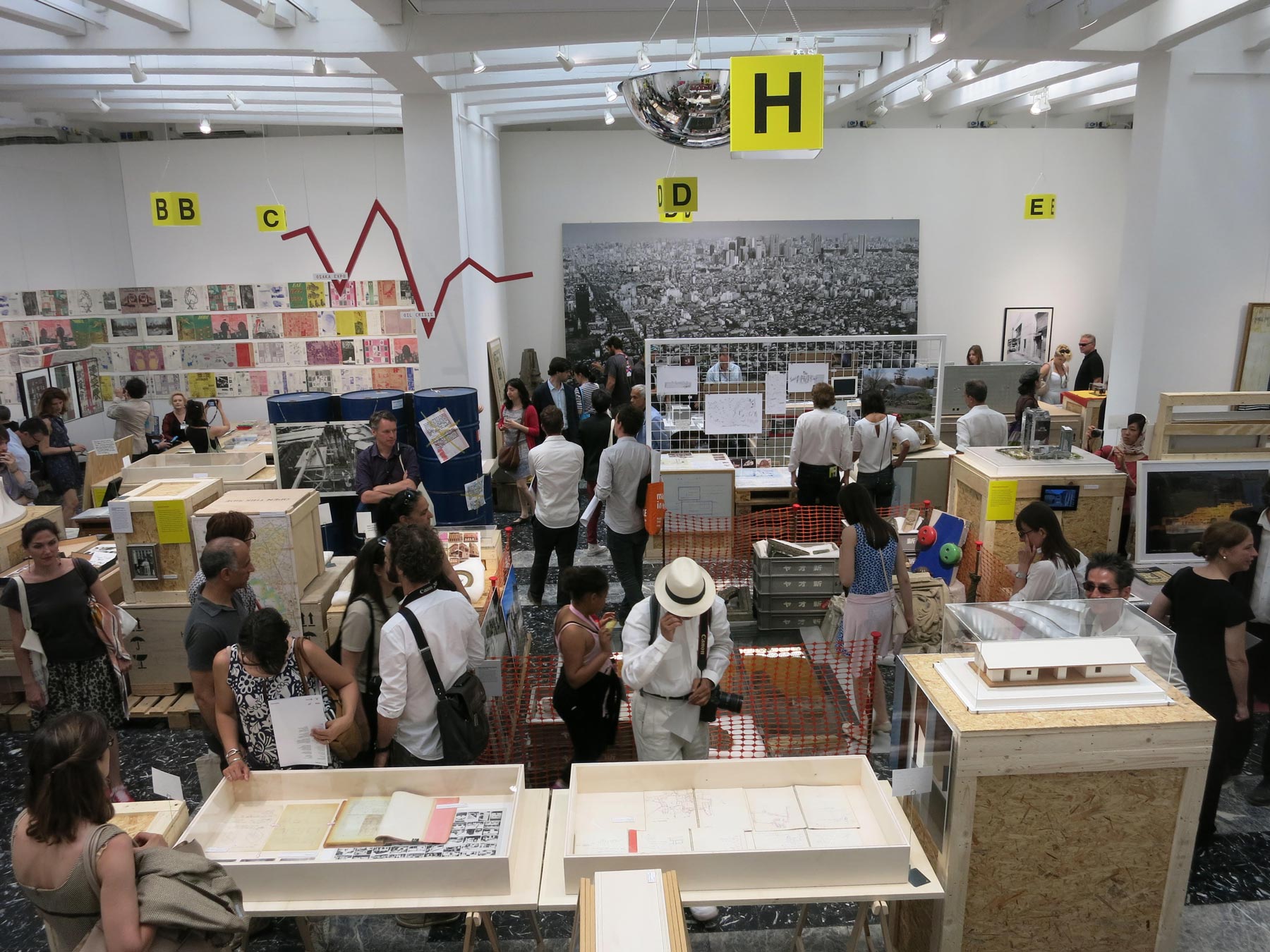
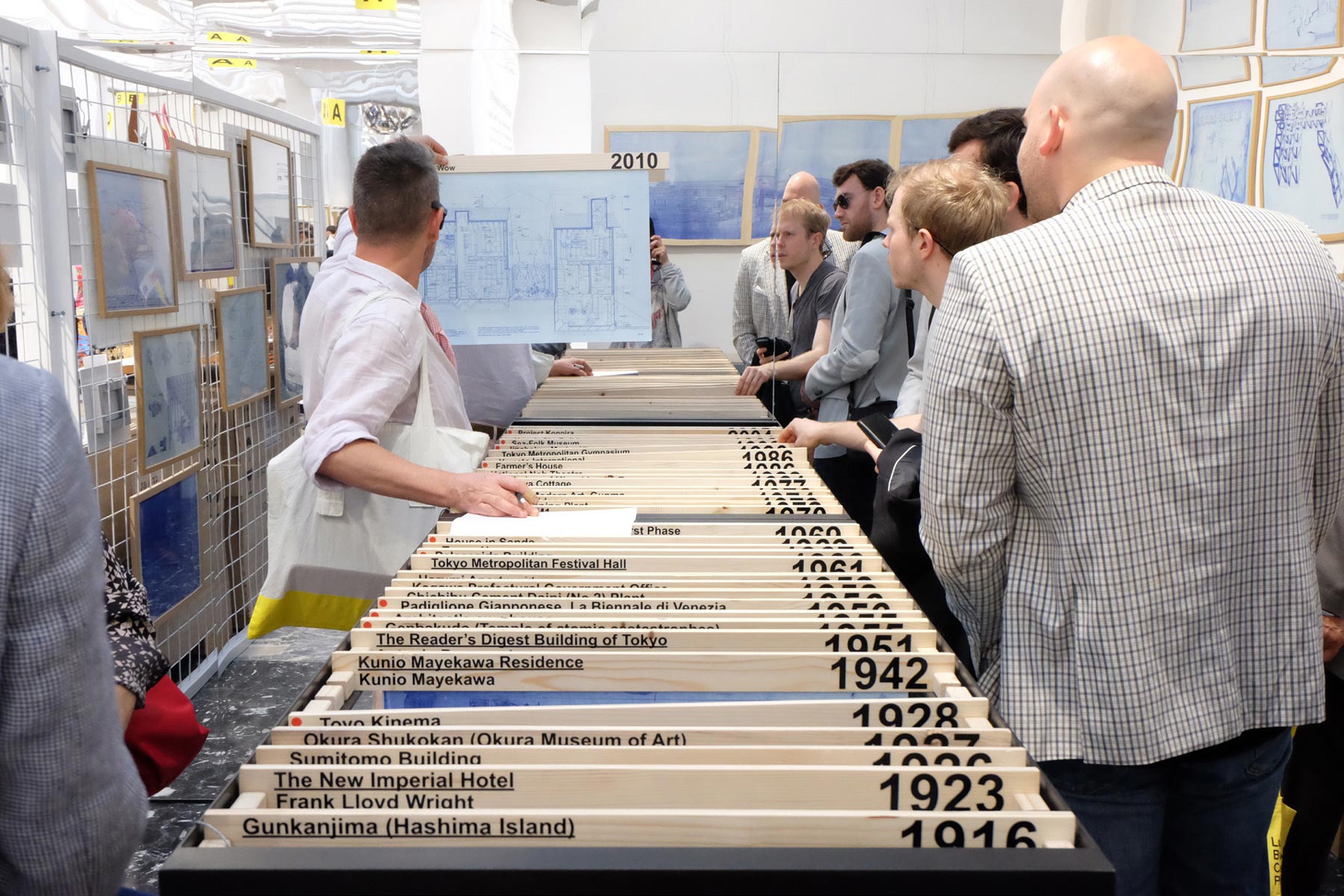
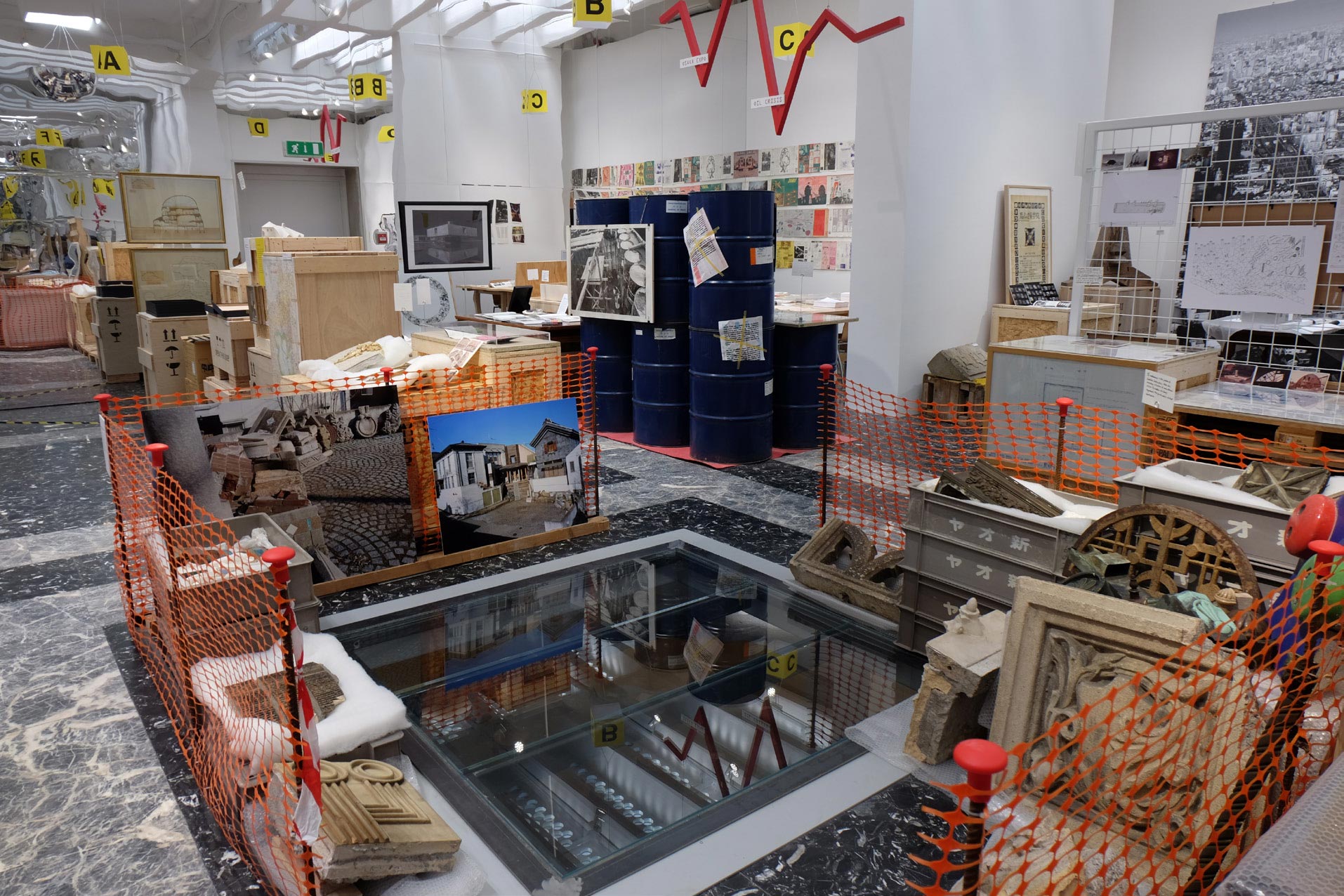
The Japan Pavilion
- Theme
- A Storehouse of Contemporary Architecture
- Commissioner
- Kayoko Ota
- Text
- Director
- Norihito Nakatani
- Executive Advisor
- Hiroo Yamagata | Keigo Kobayashi | Jin Motohashi
- Artists (Architects)
- Tadao Ando | Osamu Ishiyama | Toyo Ito | Eiji Ebihara | Isamu Kujirai | Kazunari Sakamoto | Kazuo Shinohara | Atelier ZO (Hiroyasu Higuchi, Otake Koichi, Reiko Tomita) | Hiroshi Hara and Atelier φ | Koichi Masahashi | Jiro Murofushi | Kikoo Mozuna | Riken Yamamoto | Yoshizaka Takamasa | U laboratory
- Artists (Architecture historians, urban observers)
- Tsuguo Aizawa, department of Architecture, Musashino Art University | Tsutomu Ichiki | Chris Fawcett | Takashi Hasegawa | Terunobu Fujimori | Shuji Funo | Takeyoshi Hori | Tomoharu Makabe
- Artist
- Genpei Akasegawa | Hyperart Thomasson Observation Center
- Artist (Photographer)
- Takeshi Yamagishi
- Artist (Film Director)
- Tomomi Ishiyama(Interviews: Tadao Ando, Peter Eisenman, Arata Isozaki, Toyo Ito, Rem Koolhaas, Charles Jencks, Toshio Nakamura)
- Organizer
- The Japan Foundation
- Special Support
- Ishibashi Foundation
14th International Architecture Exhibition
La Biennale di Venezia
- Theme
- Fundamentals
- Curator
- Rem Koolhaas
- Dates
- June 7 - November 23, 2014
- All texts are based on information at the time.


